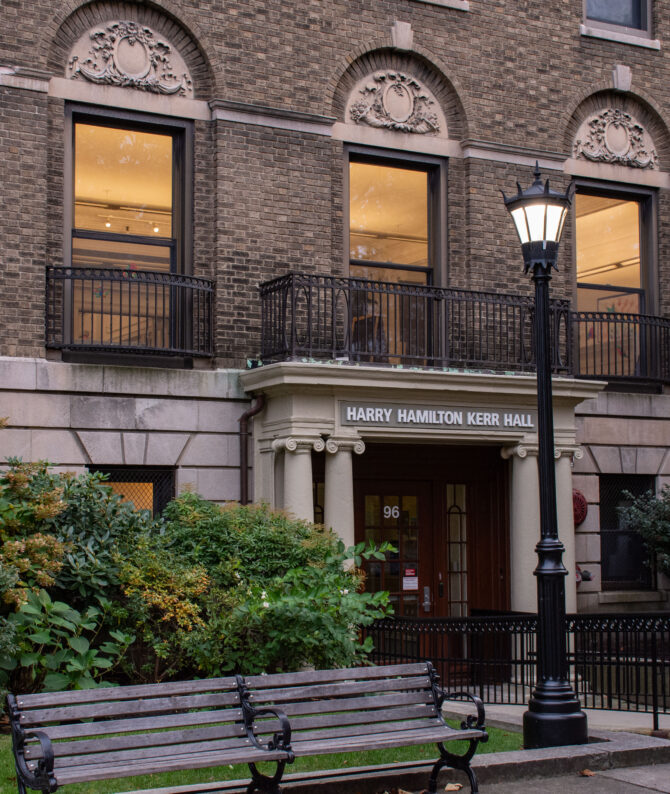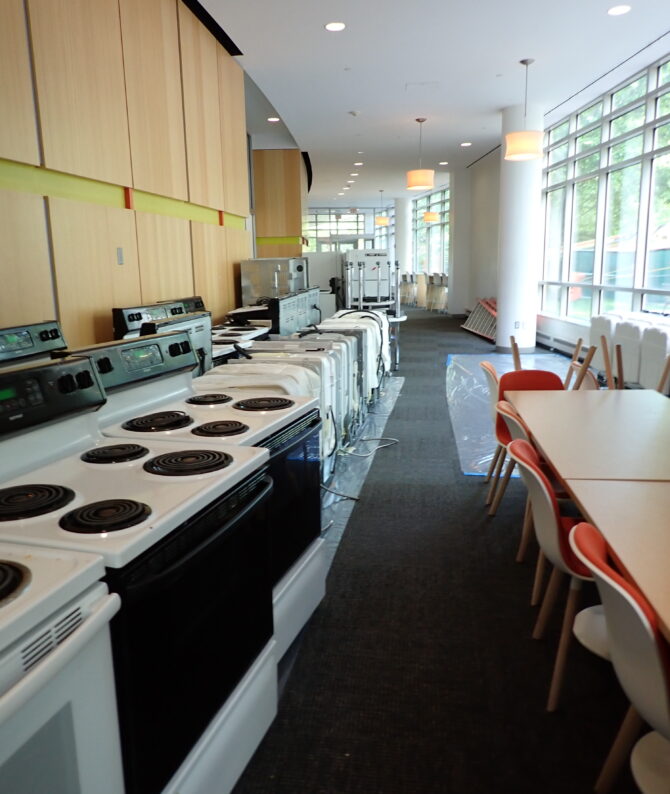Sensing a Cleaner Future

Amy Mueller, an assistant professor and researcher at Northeastern University, does not fit in one box when it comes to her subject expertise; her position at Northeastern is a joint appointment in civil and environmental engineering and marine and environmental science. “That was an intentional choice because these environmental questions are very often intersectional,” she said. “There’s not an isolation in which you can think about the environment anymore. All of the environment is basically there in some kind of role that’s being used for humans.”
Mueller’s research spans a variety of topics, but at the heart of all of it is her desire to see nature and cities coexist in the best way possible. “I have just always felt the happiest when I’m around nature, but I’m a city person in my heart. So, I want these two things to exist together, and that’s a big motivator for me.”
Mueller is currently involved in research dealing with air and water quality monitoring. She helps develop sensors that can give humans a better understanding of problems like air and water pollution.
“I think that the real big challenge is not in stating the problem, I think we can all agree those things are problems,” she said. “But the challenge is that even if we know that’s the important question, knowing what to do about it means we need to have specific numbers to put on things so we know what is the bigger problem, what’s the more urgent problem? What’s an attainable and reasonable goal? Where do we focus our efforts? That’s really where my lab works, is this idea that measuring the urban environment is hard.”
Mueller is an expert in developing sensors that can measure things like air pollution, an essential part of a project she’s currently working on with a group of researchers from Northeastern and LSU. The project is called “Toxic-Free Footprints to Improve Community Health Against Respiratory Hazards,” and the goal is to figure out how human mobility (where people go and how they get there) affects exposure to air pollution. Sensors will collect air pollution data via a portable lunch-box sized sensor package the team is building to find out where air pollution is the worst and how that correlates to the types of buildings and urban elements nearby.
Communication is also a key part of the project and Professor Ryan Wang, the project lead, is developing an app that will inform people about air pollution based on location. This will allow people to make informed decisions about how they want to travel based on pollution and their health. More information about this project can be found here.
Another project Mueller is working on involves measuring the amount of nutrients and chemicals in stormwater runoff. Over a century ago, Stoney Brook used to run through where Northeastern is now, and into the Muddy River at the Fens. Stoney Brook was diverted underground because of flooding and pollution and now runs underneath Northeastern.
“That stormwater tunnel is something like 33 feet wide and 18 feet tall. You could drive two semi-trucks easily side by side in this tunnel. That’s how big it is and how much water it’s conveying from a huge swath of the city through this one place,” Mueller said. “So, once you have that much water aggregated together, it’s really interesting to study how much nutrient load is in this water. Do we see any bacterial contamination? How much metal pollution is in this water? Does it tell us something about what’s happening upstream in terms of fertilizers or runoff? Is our street cleaning working? Do we have any illicit connections to the municipal wastewater sewers? Are we getting a ton of brake pad contamination in here?”
Over the last 10 years, the Boston Water and Sewer Commission (BWSC) has invested heavily in green infrastructure and street cleaning to decrease the levels of pollution in stormwater. This project is part of a BWSC evaluation of those efforts.
Mueller is also involved with an early-stage project trying to find a way to reduce the nutrient footprint of ocean aquaculture. Scientists know there is nutrient pollution from ocean aquaculture but don’t have sensors that are helpful for analyzing its movement simultaneously at many points in space and over time. That is what Mueller’s team is currently building.

Shannon Butler and Morgan Connelly complete weekly sampling for Mueller’s lab.
“Anybody who’s had a fish tank knows you can’t just leave fish in water without cleaning it. When we install aquaculture pens in the ocean, it’s just an open net and the ocean is doing all that cleaning for us, which means the pollution is all going someplace else. We’re trying to think of a future where we can actually do recirculating aquaculture in the ocean and reduce all of that nutrient footprint.”
Northeastern students are at the center of Mueller’s research. Her lab typically has three to six undergraduates working on research projects every semester and two or three masters students each year. Every project also involves Ph.D. students.
“Students are the lifeblood of research for sure and are really doing all the day-to-day stuff. Faculty tend to not get to do the day-to-day stuff as much as we want, and students get to do most of the fun things.”
With the help of these students, Mueller will continue to juggle different projects and make progress on research that will benefit people in Boston and all over the world.
Written by Adam Doucette – 5/16/2022



